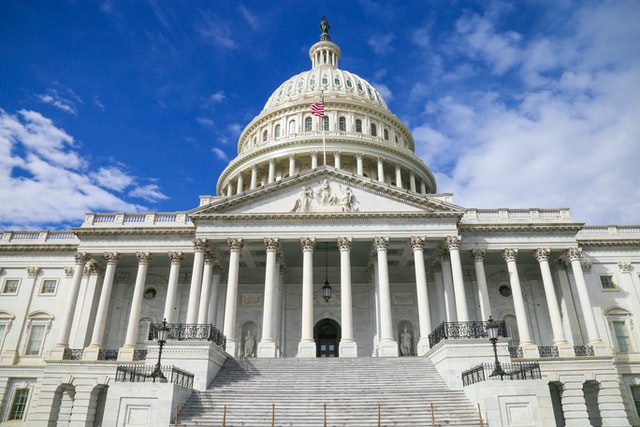Trump sent the $900 billion stimulus bill back to Congress last week requesting that the second stimulus check be raised from $600 to $2000 for qualifying Americans. In his statement uploaded to Twitter, he also made several complaints about foreign aid (but didn’t mention the $1.4 billion going to the border wall):
Then, on December 27, 2020, Trump signed the bill into law with the Senate’s commitment to consider the stimulus check increase. With Trump’s statements as momentum, the House of Representatives moved swiftly to pass a bill amending the stimulus check provision to $2000 per qualifying American. That bill has now moved to the Senate.
Major benefits of the signed bill include:
- stimulus checks,
- federal unemployment benefits increases,
- money for small businesses,
- money for schools and child care, and
- vaccine distribution.
You can read the full 5593 pages of the bill here if you’d like. Otherwise, you can just get the highlights on your stimulus check and unemployment benefits below…
The Second Stimulus Check
Do I qualify for a second stimulus check?
That depends. Just like the last bill, whether you receive a check will depend on your 2019 tax returns. For this bill, Americans who made less than $75,000 in 2019 will receive the full second stimulus check. Americans who made more than $75,000 will receive a diminished amount, zeroing out for those who made more than $99,000.
How much will the second stimulus check be?
Currently, the full stimulus check amount is $600. However as mentioned above, the House of Representatives passed a bill this week requesting that the amount be amended to $2000. Now, it’s up to the Senate to consider the new bill. Again, Americans who made more than $75,000 last year will receive a diminished check.
When will I get the stimulus check?
That is currently unknown. Prior to Trump’s decision to not sign the bill, Treasury Secretary Steven Mnuchin told CNBC on December 21, 2020 that they expected direct deposits would begin the following week. So, it seems that disbursements could move quickly.

By the way, this is Steven Mnuchin. He looks like a stock photo titled “average guy”:
Unemployment Benefit Increases
Unemployment Benefits Program Extensions
The two most prominent federal assistance programs related to unemployment are the Pandemic Emergency Unemployment Compensation (PEUC), and the Pandemic Unemployment Assistance (PUA).
Other unemployment benefits-related provisions addressed in this stimulus bill include the Federal Pandemic Unemployment Compensation (FPUC) extension, the “no wait week” reimbursement, the mixed-earner supplement
PEUC
The PEUC provides up to 13 weeks of additional benefits for those who have exhausted their state’s unemployment benefits.
The bill extends PEUC benefits to March 14, 2021, allowing those receiving benefits as of March 14, 2021 to continue through April 5, 2021, as long as they have not reached the maximum number of weeks.
PUA
The PUA on the other hand, provides up to 39 weeks of unemployment benefits to individuals who are not eligible for their state’s regular unemployment benefits. This includes those who are self-employed, some independent contractors, and other workers not eligible for their state’s unemployment benefits.
Just like the PEUC, the bill extends PUA benefits to March 14, 2021, allowing those receiving benefits as of March 14, 2021 to continue through April 5, 2021, as long as they have not reached the maximum number of weeks.
What about the Federal Pandemic Unemployment Compensation (FPUC)?
If you applied for unemployment benefits during the pandemic, you might remember the additional $600 you were getting in addition to your regular benefits…
This bill restores the FPUC supplement to all state and federal unemployment benefits, but at $300 per week, starting after December 26 and ending March 14, 2021.
Mixed Earner Unemployment Compensation
This provision catches the employees in the middle; that is, employees who were both employed…but who made a good amount of their income via self-employment.
Americans who made at least $5,000 a year in self-employment income but are disqualified from PUA because they DO qualify for state benefits may receive an additional $100 per week. This supplement would be in addition to the FPUC benefits and would also end on March 14, 2021.
“No Wait Week” Reimbursement
Some states impose a “waiting week” on unemployment benefits, which is really just your state saying, “Yes you’re eligible, but we’re not going to pay you for the first week.” This bill provides states with reimbursements of 50% of the cost to waive the waiting period.
If you want to learn more, check out this handy “Division by Division Summary of COVID-19 Relief Provisions”:
Summary-of-H.R.-133-Coronavirus-Relief-Provisions
